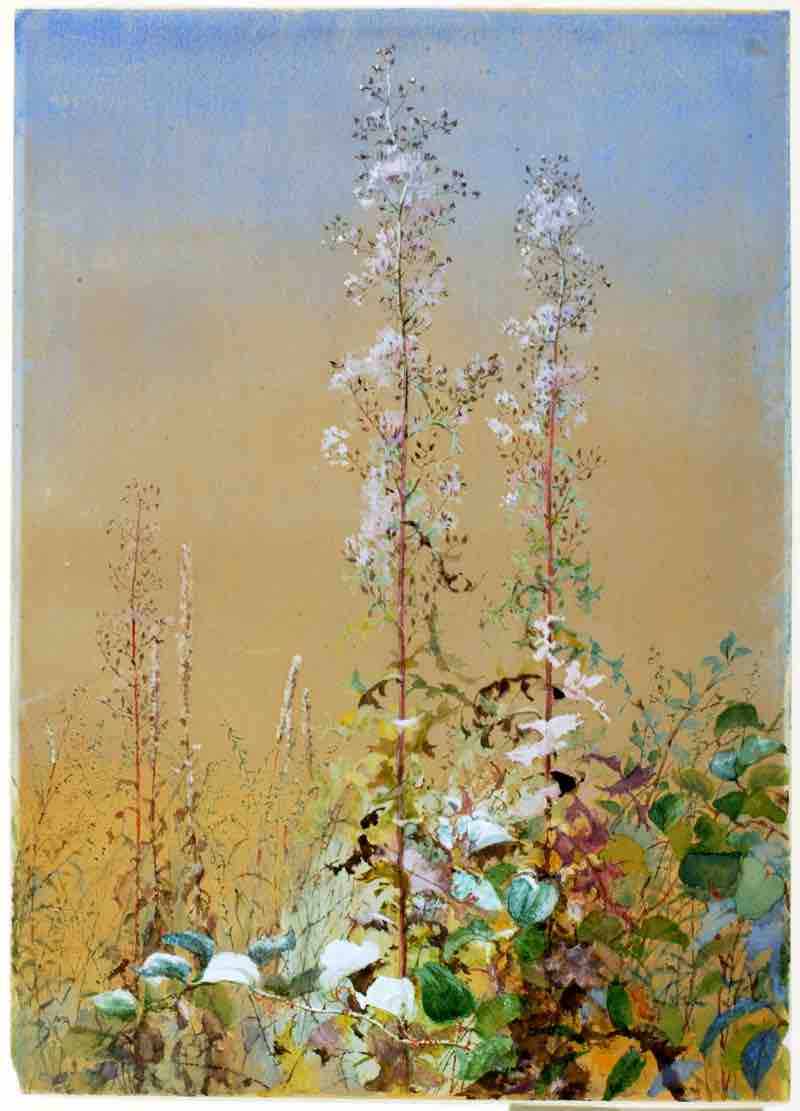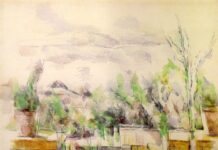
Fidelia Bridges
ca. 1876, watercolor on paper, 14 x 10 in.
Smithsonian American Art Museum, given in memory of Charles Downing Lay and Laura Gill Lay
Despite inauspicious beginnings as an orphan growing up in Salem, Massachusetts, Fidelia Bridges (1835-1923) became one of the few women artists of her time who could support herself with her work. While studying at the Pennsylvania Academy of Fine Arts, she befriended William Trost Richards and spent a summer with him and his family, working as a “mother’s helper” while continuing her outdoor study of the landscape. Her mentor’s lessons in Pre-Raphaelite theory convinced her that “each object in nature should be given its greatest precision of form and intensity of local color.”
Of the detailed paintings of birds and flowers for which she became best known, one critic wrote, “She paints as if the year were all springtime.” Having enjoyed both commercial and critical success, she was elected into the National Academy of Design and became one of the first female members of the American Society of Painters in Water Color (known today as the American Watercolor Society). Ultimately she settled in Canaan, Connecticut, where a bird sanctuary bears her name, and where for years after her death, her friends put wildflowers on her grave every Memorial Day.
In Vibrant Watercolors, Georgia Mansur shares her process for painting vivid colors full of life.








